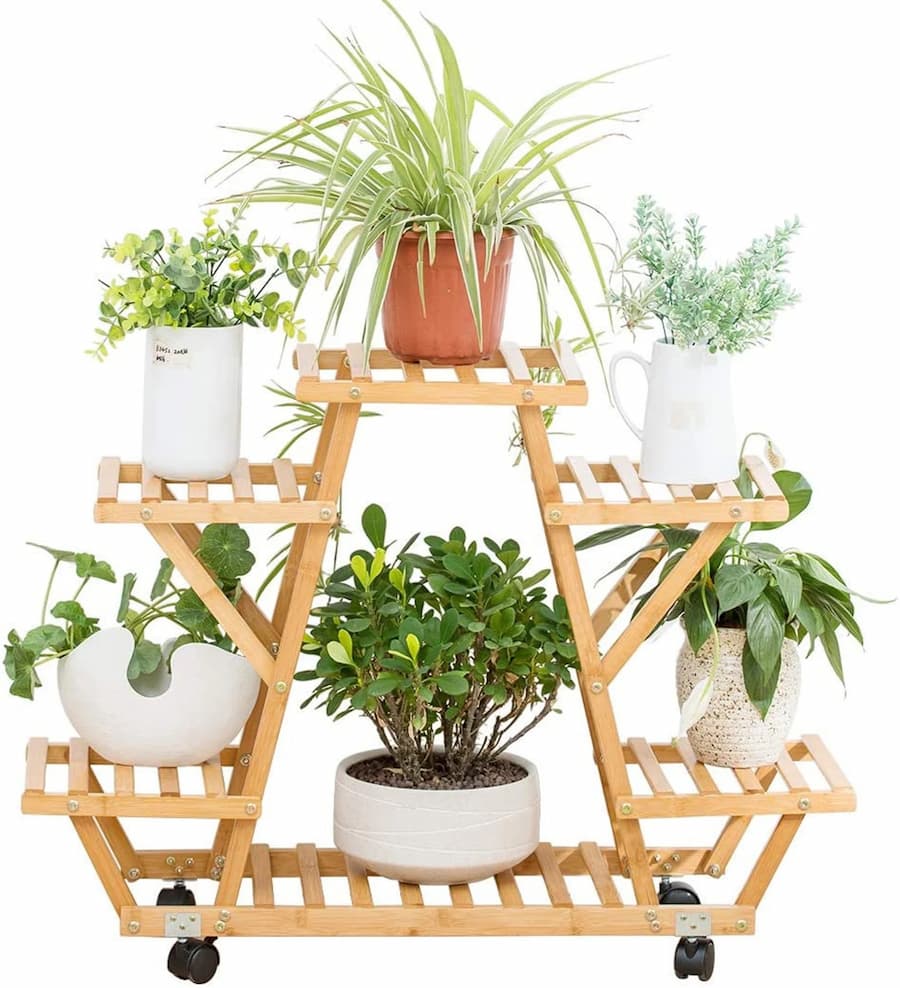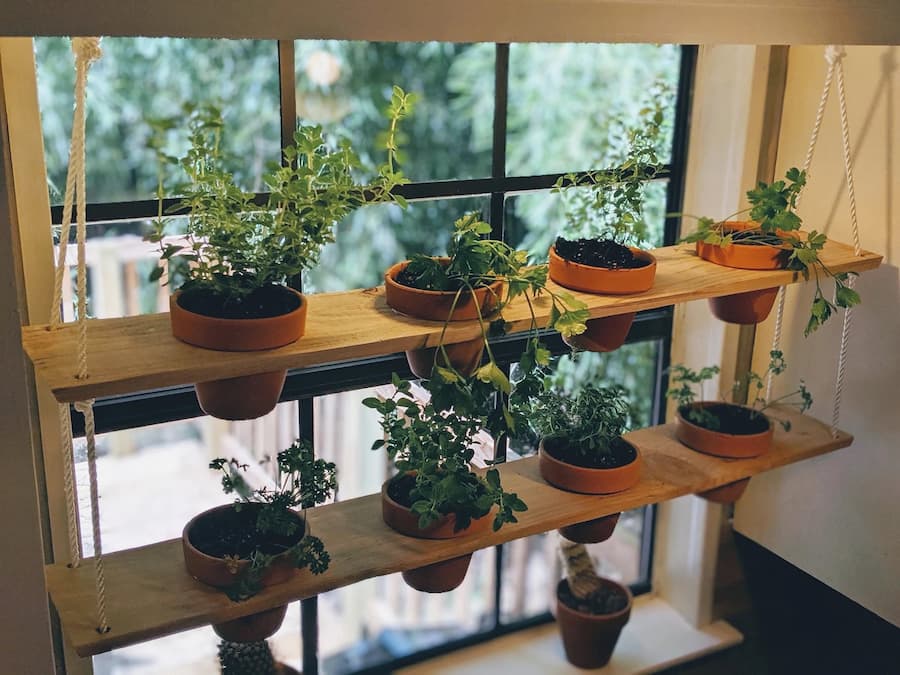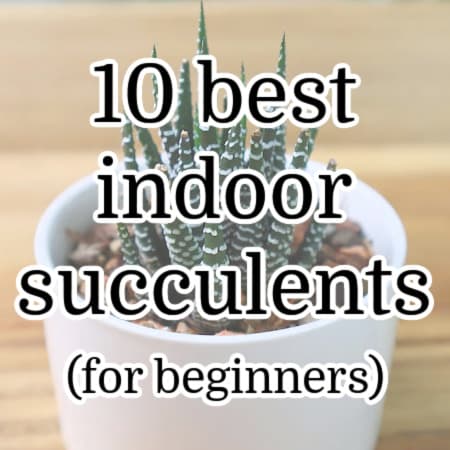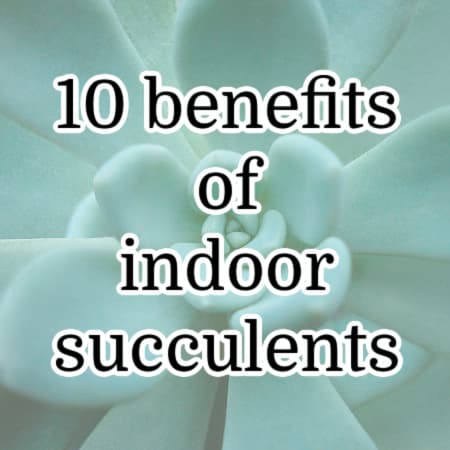How to Make an Indoor Succulent Garden (in 7 Easy Steps!)
Do you love succulents, but don’t have the time or space to grow them outside? Then you’re in the right place!
In this handy guide, I’ll tell you everything you need to know to create your own beautiful indoor succulent garden.
We’ll cover everything from which succulents are best for indoors, what kind of soil to use, choosing grow lights if you need them, and look at some cute and functional indoor garden rack ideas.
Let’s get started!
Pin this to your favorite gardening board on Pinterest!
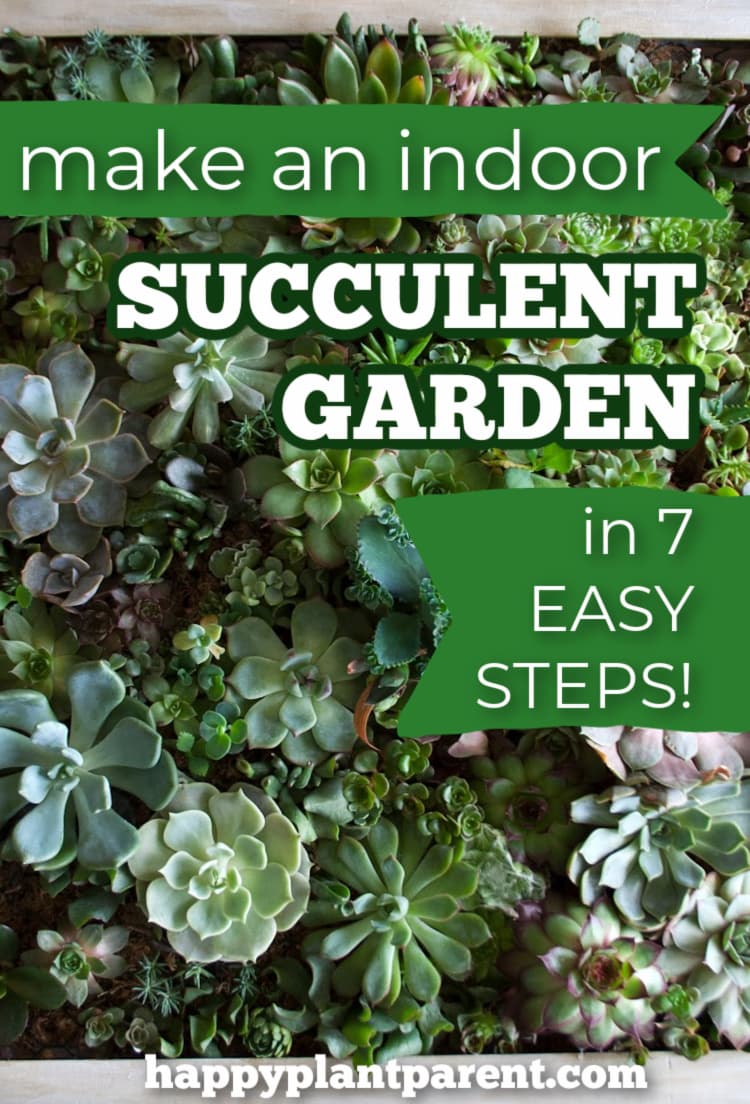
(This post contains affiliate links. If you click one and make a purchase, I may receive a commission at no extra cost to you. Read the disclaimer here. Thank you for your support!)
Choose Your Succulents
First things first! You have to find some succulent plants to fill your indoor garden.
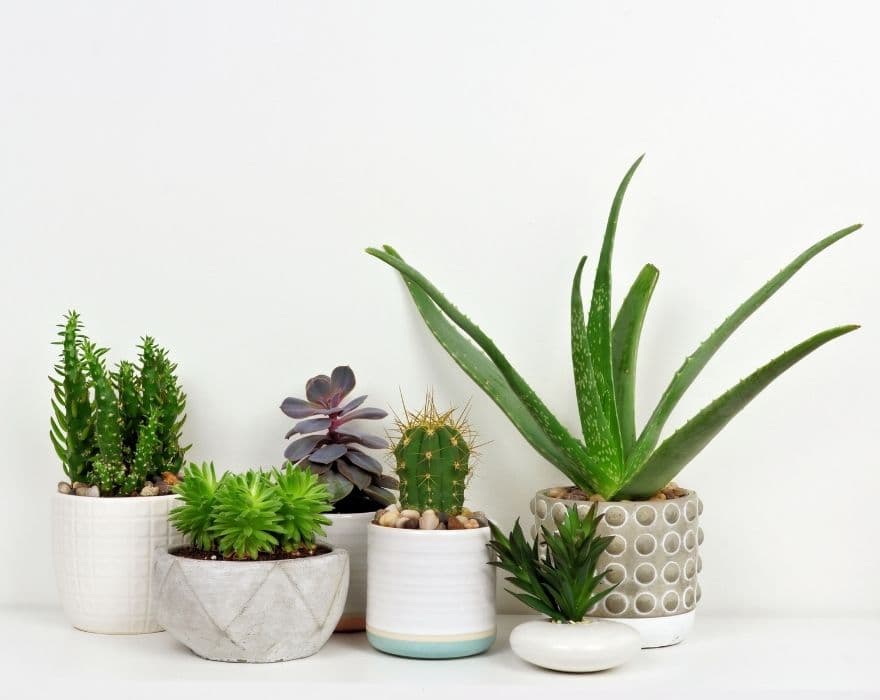
A few places to find them is at your local garden centers, the grocery store, or at online specialty shops. I’ve had the best luck buying my indoor plants online from shops that specialize in succulents.
Get 10% off your succulent purchase at Mountain Crest Gardens!
The stores near me have very sad, neglected succulents and while I want to save them all, I don’t want all the bugs and issues affecting my other plants back home.
Some succulent plants do better indoors than others. While some may be fine with partial shade, some require lots of light and won’t do well in the shade.
You’ll want to take into consideration how much natural light you receive through your windows and if it’s not much, you may need to supplement with artificial lights.
Here are a few of the best succulents to grow indoors:
- Zebra Haworthia (Haworthiopsis attenuata)
- Jade Plant (Crassula ovata)
- Panda Plant (Kalanchoe tomentosa)
- Aloe Vera
- String of Pearls (Senecio rowleyanus)
- Flaming Katy (Kalanchoe blossfeldiana)
Check out this post to see some other great indoor succulents for beginners!
Pick Your Pots
When you’re growing succulents indoors, it’s best to use pots that have adequate drainage holes at the bottom.
It’s OK to use shallow containers, a small pot, or a larger container, as long as it has drain holes it should work!
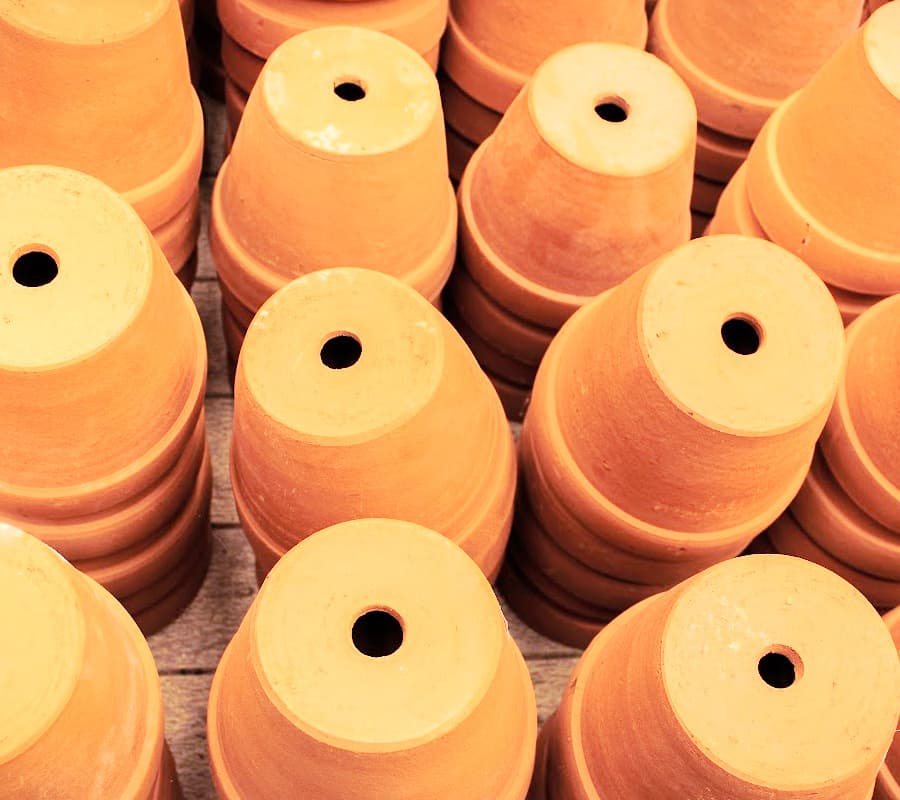
While you can grow healthy succulents in pots without holes, it’s tricky to give them the right amount of water without over watering.
A lot of people think that succulents do best with a light watering or misting, but that’s actually not true.
Succulents prefer a heavy watering that soaks the roots fully, but they need a fast draining soil that gets rid of the excess water ASAP. They don’t like having soggy feet!
While a fast draining soil does a good job of letting the water drain, if there aren’t any drainage holes it’ll end up sitting at the bottom of the pot and succulents don’t like that at all.
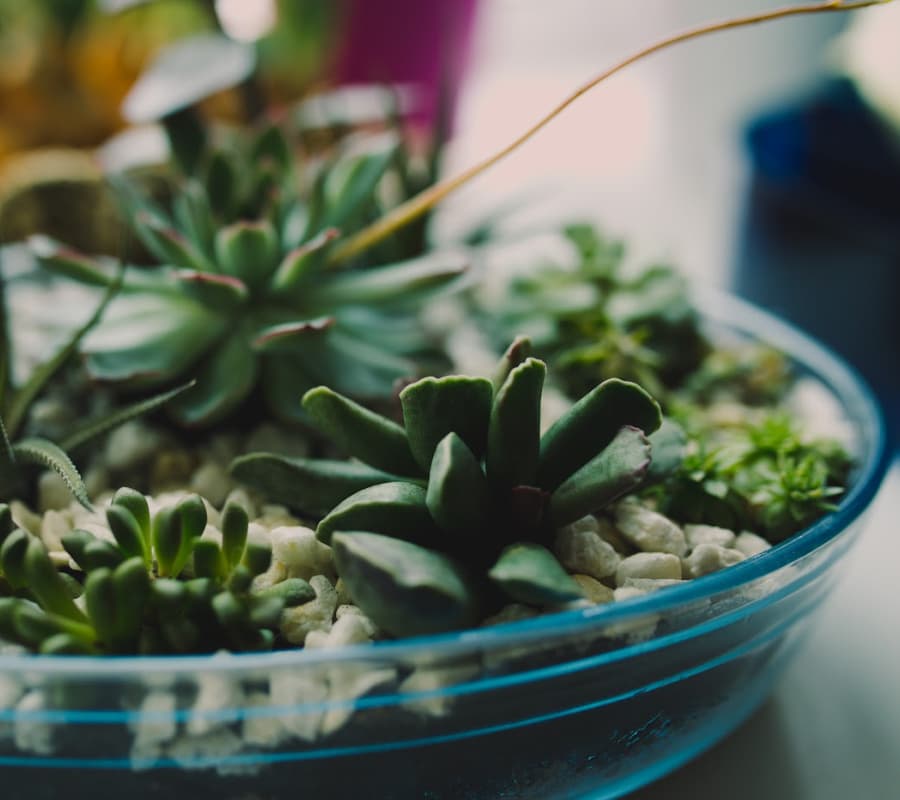
Contrary to popular belief, adding rocks or gravel to the bottom of the pot don’t help add drainage.
It just raises the bottom of the soil up higher, essentially making the pot shorter and the water still sits down there at the bottom causing all sorts of problems with your succulents.
So, bottom line: your best bet is plastic, ceramic or terracotta pots with plenty of drainage holes at the bottom.
Glass containers are pretty and a mason jar can work temporarily, but your succulent will be happiest with drainage holes in the long run.
I really love these shallow pots that I found on Amazon!
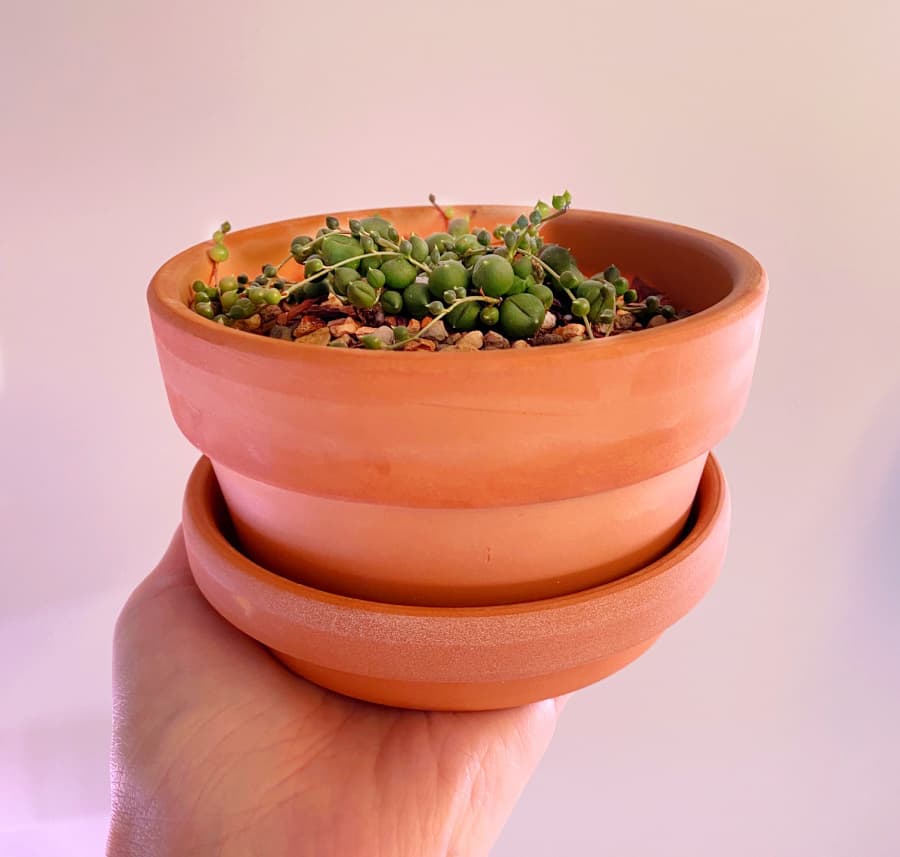
Get the Right Soil
It’s super important to use a fast draining soil or substrate for your indoor succulents.
Without good drainage, the succulents will end up sitting in water and over time develop root rot. It’s definitely not what you want to happen!
Regular potting soil holds onto way too much water and won’t work well for your succulents.
You can buy a good quality succulent soil that’s pre-mixed, or you can mix up your own.
A good DIY substrate mix for indoor succulents usually is made up of a few of the following ingredients:
- coarse sand (not beach sand, it contains pathogens and creepy crawlies you don’t want near your plants!)
- crushed granite
- chicken grit
- perlite
- pumice
- pine bark fines
- turface
- coconut coir (holds in moisture so only use this if your plants actually need more water)
- potting soil
The best ratio to go with is two-parts inorganic matter (like sand, granite, or pumice) and one-part organic matter (like potting soil), but you can play around with the amounts to get it just they way you and your plants like it.
If you prefer to buy premixed succulent soil mix, here are some of the best options for indoor succulents:
- Bonsai Jack Gritty Mix (my favorite!)
- Black Gold Natural & Organic Succulent and Cactus Soil
- Miracle Gro Cactus Palm and Citrus
- The Next Gardener Professional Grower Mix
- Superfly Bonsai Succulent Potting Soils Mix
FYI: I know I mentioned this before, but it bares repeating. You’ll commonly see advice that adding rocks to the bottom of the container will add drainage, but that’s not the case.
Doing that basically makes your pot shorter, and way too much moisture still sits down at the bottom making your succulent roots super sad.
I wrote a whole article about the best soil for growing indoor succulents that goes into even more detail, be sure to check it out!
Supplementing with Grow Lights
The cheapest and easiest way to make a garden of succulent arrangements is to stick them near a window that gets lots of bright light.
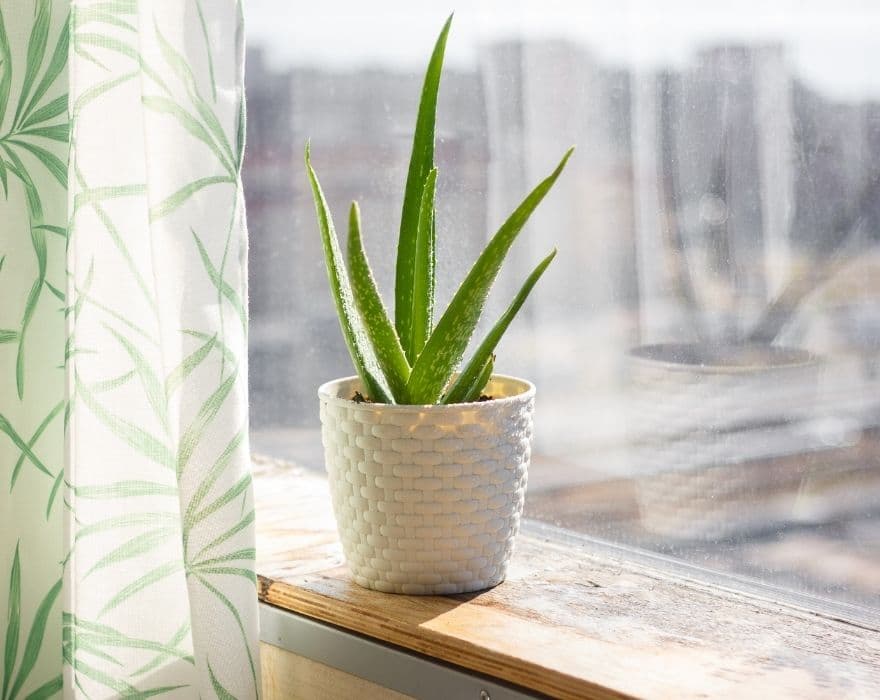
If you already have happy indoor house plants that light a lot of light, you can make a new home for your succulents there, too!
If you don’t have a south facing window that get lots full sun every day, it’s a good idea to supplement with grow lights.
Most succulents need at least 4 to 6 hours of direct light every day to be happy, and some need more than that.
There are a few like Zebra Haworthia that can handle low light conditions, but even it prefers at least a few hours of sun.
There are several different grow light options for your indoor space. I recommend using LED lights because they use less electricity and don’t put off a lot of heat.
Here are the ones from Amazon that I currently use:
- Barrina 6 Pack of 2 foot long grow lights
- Monios 4 foot long grow light
- Vivosun clamp light with this grow light bulb
If you go the grow light route like I did, I highly recommend getting a timer.
It automatically turns the lights on and off for the length of time that you set and it makes it so simple. (Especially if you’re like me and like to sleep in.)
Proper Airflow
One important thing that commonly gets overlooked with indoor gardens is proper air circulation.
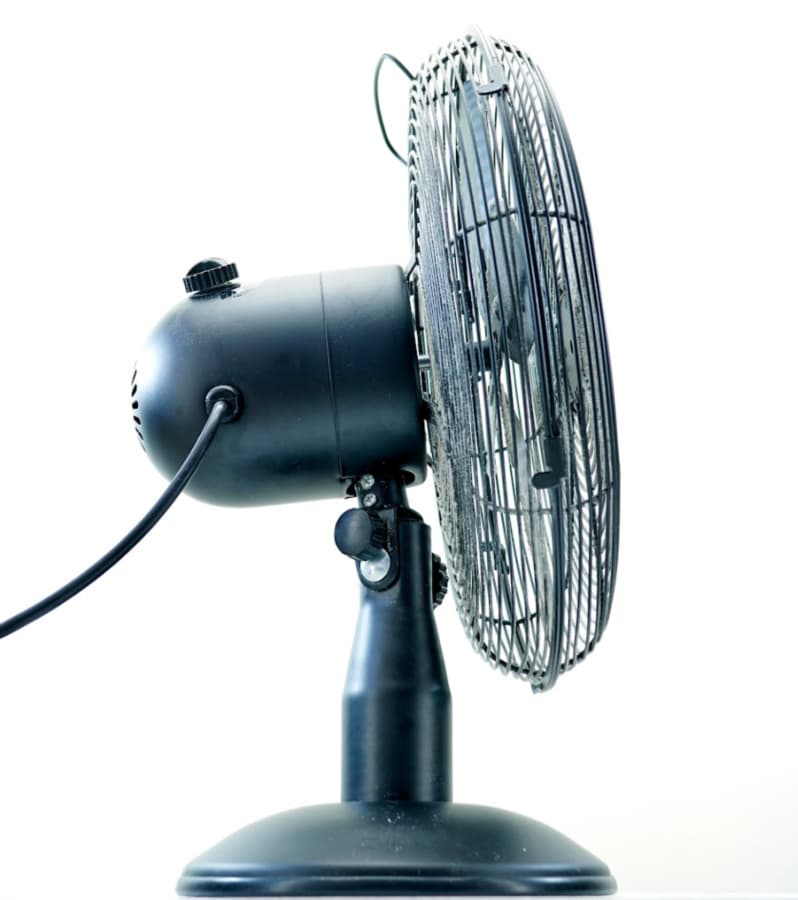
Stale, stagnant air is one of the main causes of mildew issues and it can also invite more bug infestations which is every succulent lovers nightmare. Yuck.
If your indoor succulent garden is located near a window, you can always open it up and let a breeze roll through. But that doesn’t really work if it’s the middle of winter, or if you’re in the middle of a summer heat wave and the A/C is on.
A good way to help move the air is with a simple desk fan. You can buy a small fan that clips onto your shelf to help circulate the air around your succulent babies.
Don’t point the fan directly at your mini garden, that’ll dry the soil out too fast. You just need the air to keep moving and not get stagnant.
You can also use a box fan, oscilating fan, or if you have a ceiling fan that works too. Don’t turn them up too high and don’t have them blowing right on your plants.
We’re going for gentle breeze, not wind tunnel.
How to Water Your Indoor Succulents
This is one of the biggest issues new succulent owners deal with, so let’s cover the basics real quick.
Succulents need to be watered deeply, but allowed to dry out before their next drink.
This method is called the soak and dry (or drench and drain) method and it’s crucial for the health of your plants!
Pour the water all over the soil at the base of the plant. Try not to get water on the leaves, it can cause them to rot. If you do, just dab them with a paper towel and it’ll be OK.
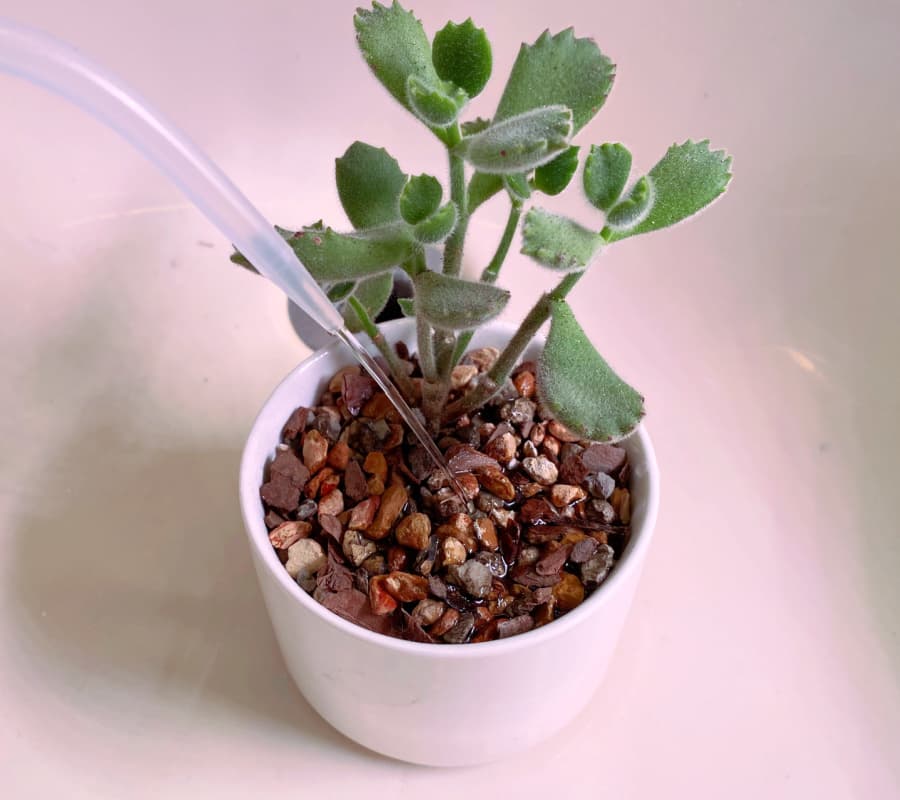
Most importantly, give the soil a good soaking until the water pours out the drain hole at the bottom of the pot.
Then wait until the soil is COMPLETELY dry before you water again. It’s a good idea to keep a record of when you watered so you don’t end up watering again too soon.
I wrote a whole article all about watering your indoor succulents that goes into a lot more detail, be sure to check it out!
Ideas for Indoor Succulent Garden Racks and Shelves
Now it’s time for the fun part!
There are so many fun ways to set up an indoor succulent garden. It’ll all depend on if you’re planning to put your succulents in front of a sunny window, or if you’ll be using grow lights (like me).
Here are some really cool indoor succulent garden ideas to give you some inspiration!
3 Tier Bamboo Plant Rack
I grabbed one of these on Amazon and it looks super cute in my plant room!
Save this one for indoor use only, according to other reviewers it can get moldy outside.
5 Shelf Wire Rack
These wire racks work really well for indoor plants and they provide great air circulation!
It’s really easy to make an indoor garden setup with these because you can hang grow lights and clip on a fan super easily.
Bamboo Rolling 6 Shelf Rack
This cute little shelf is perfect for small spaces!
Plus it has wheels so it’s easy to move around and get optimal light.
Hanging Plant Shelves
Check out these cute hand made hanging plant shelves!
They have holes cut for your pots to fit down into so you don’t have to worry about them falling off. So smart!
There are so many clever ways to display your indoor garden. Want some more inspo? Follow my Pinterest board with even more ideas!
In Conclusion
It’s totally possible to create a beautiful and functional indoor succulent garden even if you don’t think you have a green thumb. You just need some pots, proper soil, a sunny window (or grow lights!) and the right low maintenance plants.
I hope all the ideas in this article for cute racks and shelves will inspire you to create your own little succulent oasis inside your home!
Looking for more information about raising indoor succulents? Check out these helpful posts!



